agInnovation Research Center | Ecology
agInnovation Research Center | Ecology
Restoration ecology research at UOG
What is restoration ecology?
Restoration ecology is the science that supports restoring degraded habitats to re-establish the natural species and ecological processes. The goal of restoration ecology is to bring an area back to the way it was prior to the disturbance.
Ecological challenges in the Western Pacific
Tropical islands have the highest rates of endemic species and biodiversity in the world. However, they are also more prone to the invasion of non-native species and the extinction of native species. Islands of the Western Pacific, which are very small and remote, are extremely susceptible to both invasions and extinctions. Guam is a stunning example of how invasive species (i.e., the brown treesnake) can drive the extinction of an entire guild of species (i.e., forest birds). Understanding the ecology of each unique island is key to preventing invasions/extinctions and in trying to restore ecological balance.
Restoration ecology is often unattainable if the environment has permanently lost essential functions. For example, Guam’s limestone forests have evolved with karst topography (ancient coral reefs). Once this karst structure is destroyed and soils compacted, it is nearly impossible to restore the forest to how it once was. As a result, the native limestone forests of Guam that once covered most of the northern half of the island are now only found in small remnants.
In addition, Guam has lost nearly all its forest avifauna (including the fruit bat). Forest trees that have evolved with these seed-dispersing species no longer have a mechanism to disperse their seeds, causing a sharp population decline. Invasive mammals, such as the Philippine deer and feral pigs browse on seeds and young seedlings, severely limiting forest regeneration. Additional invasive species, such as invertebrate pests like the coconut rhinoceros beetle and cycad scale, threaten the survival of once-dominant trees.
In southern Guam, frequent fires have changed the landscape and degraded the watersheds. Fire is not a natural part of Pacific island ecosystems. In Guam, fires are mainly started intentionally to promote illegal hunting activities. Most of the native vegetation is not adapted to frequent fire cycles and cannot recover, promoting the expansion of aggressive fire-adapted grasses. These grasses (both native and non-native) can quickly take over a landscape and add a tremendous amount of flammable biomass. Each fire burns hotter and covers more area as the landscape is converted to grasslands. Heavy rains that come immediately after a fire will wash away unprotected soil, creating huge erosion scars and depositing large amounts of sediments in fragile coral reef ecosystems.
Addressing these challenges
At UOG's agInnovation Research Center, restoration ecologists are testing methods to address these challenges. Our goal is restore many of the species and ecological functions that have been lost due to human disturbance and encroachment by invasive species. This includes controlling invasive species, minimizing the impact of human disturbances, re-planting native species, and finding new and innovative ways to replace the ecosystem functions that have been lost.Management of invasive vines
Through a National Institute of Food & Agriculture Hatch grant, researchers at UOG's agInnovation Research Center are studying weed management of several invasive vines, namely chain of love (Antigonon leptopus Hooker & Arnott) and mile-a-minute (Mikania scadens (L.) Willd.).
The goal of this research is to develop a comprehensive control strategy combining chemical, mechanical, and biological controls.
Research includes:
- testing shade tolerance
- cutting/herbicide treatments
- competition from native species.
Long-term control of invasive species is crucial to the success of any restoration project.
Forest restoration
UOG agInnovation researchers are working with Marine Corps Base Camp Blaz to develop a forest enhancement plan for a mitigation project associated with construction of the new Marine Base facilities. The goal is to restore the area to native forest as much as possible. However, given past disturbances, full restoration of the area is not possible.
Project goals include:
- removing ungulates
- removing invasive trees (Vitex and Spathodea)
- planting native species adapted to different microclimates.
With so many overstory trees having been removed, the open canopies will promote invasive species and changes in forest microclimates (hotter and drier). Planning for irrigation, primary and secondary successional species, and weed control are top priority for the first few years of restoration work.
Southern watershed restoration
Guam’s southern watersheds have been severely impacted by human disturbance. Fire and invasive ungulates have changed the vegetation composition of the native savanna to areas dominated by aggressive grasses, which further promote the fire cycle. Heavy rains following fire lead to severe erosion, with the loss of critical topsoil and the sedimentation of fragile reef systems. In an effort to control erosion, non-native acacia trees are planted and form dense monocultures. Although effective in soil stabilization, these forests are vastly different from the native forests, changing nutrient cycling and biodiversity.
Researchers at UOG agInnovation are working with other local agencies to develop restoration protocols for these areas.
Future projects include:
- testing mechanical stabilization techniques
- transitioning acacia forests to native forests
- determining native species that can quickly establish and stabilize soils and are resilient to fire.
The goal is to establish a set of protocols to quickly protect susceptible slopes following a fire and initiate the trajectory for the re-establishment of native plant communities.
Reports
| Title | Publisher | Date |
|---|---|---|
| Removal methods tested in Guam for invasive molave trees | National Land Grant Impacts Database | 2023 |
| Pigs and deer suppress native plants, among other negative ecological impacts | National Land Grant Impacts Database | 2023 |
Last updated: September 2023
RESEARCHERS:
Rachel Jolley, Ph.D.
Phone: (671) 487-8275
Email: rachel.jolley@triton.uog.edu
Ross Miller, Ph.D.
Dean’s Circle, House 35
Phone: (671) 735-2068
Email: millerr@triton.uog.edu
Jim McConnell, Ph.D.
ALS Bldg., Room 317
Phone: (671) 735-2129
Email: mcconnell@triton.uog.edu


